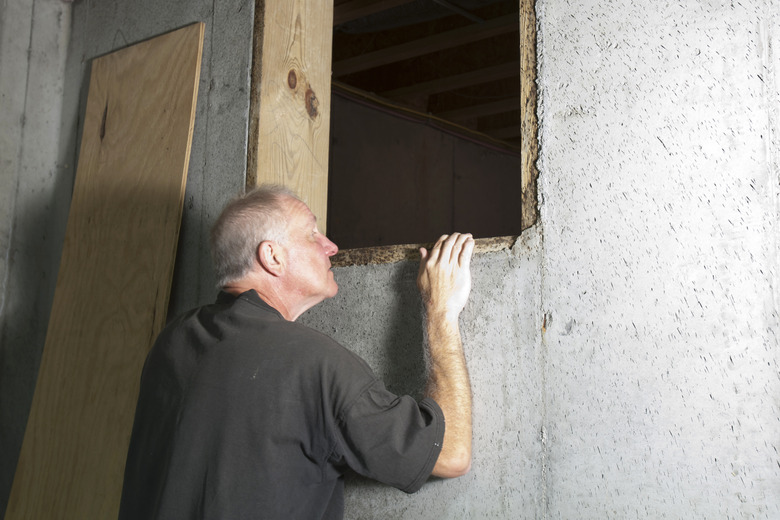How To Insulate A Crawl Space With A Dirt Floor
A crawl space under a house helps protect against certain pests, but a crawl space with abundant moisture can invite problems including mold, wood rot and vermin. Cold air that sweeps through a crawl space, meanwhile, can lead to cold floors inside the home whether or not the space is wet. Some building codes require the installation of small vents along the perimeter of crawl spaces. The technique for insulating a crawl space depends on whether these vents are present.
Holding Back Moisture
Holding Back Moisture
Whether the crawl space has vents or not, moisture is the first problem to limit. A dirt floor, even one topped with gravel, releases and absorbs moisture with changes in humidity levels. Seal out that moisture with overlapped sheets of 6-mil polyethylene plastic. The overlap must be at least 6 to 12 inches, and those seams should be taped together. Run the plastic up the walls about the same amount as the overlap, and seal them, too. You can also paint the concrete or block crawl space walls with a waterproofing membrane that goes on thick, sealing tiny pores and crevices. Direct dryer vents to the outside, and repair any leaks from plumbing fixtures or pipes.
Vented Crawl Spaces
Vented Crawl Spaces
Vents present in some crawl spaces are intended to provide air circulation that removes odors and moisture. They are small — about 6 or 8 inches long –and you will find them near the top of the crawl space. If your space has them, avoid adding insulation to the crawl space walls. Instead, install fiberglass batting between the joist bays, which are the spaces between each set of floor joists. Don't compress the insulation, as it requires its loft in order to maintain its rated R-value.
Unvented Crawl Spaces
Unvented Crawl Spaces
If vents are not present in your crawl space, insulate the walls instead of the joist bays. Cover the walls with insulation from the sill plate to the plastic covered dirt floor. The sill plate is the first piece of framing lumber, and it runs on top of the crawl space wall. When you're using fiberglass batting insulation material, run it about 6 inches or so onto the crawl space floor. Cut pieces of insulation just large enough to fit along the rim joist — the framing material into which all the floor joists are nailed.
Insulation Material Choices
Insulation Material Choices
Fiberglass batting with kraft-paper backing or encapsulated batts are the best choices for vented crawl spaces. The paper side goes toward whichever space is warmer in winter, so face it toward the living area above the crawl space. Kraft paper acts as one more moisture barrier for the home. Position encapsulated batts as directed by the manufacturer. Unvented crawl spaces are suitable for unfaced fiberglass batting, batting with special backing or encapsulation material designed for foundation walls, and rigid foam insulation board. Avoid putting kraft-paper-backed insulation against the walls, where trapping moisture could present mold and mildew problems between the walls and the insulation.
